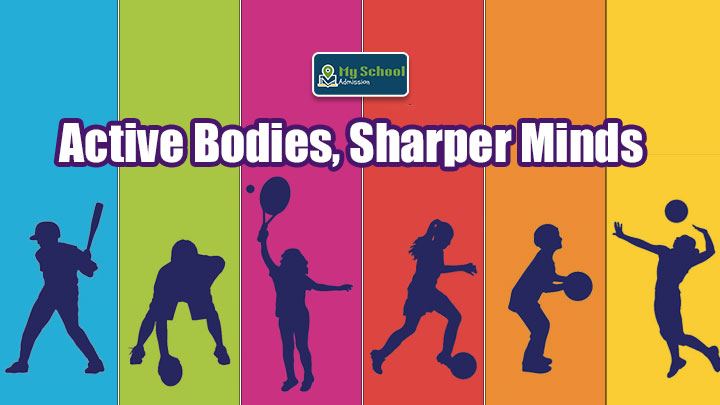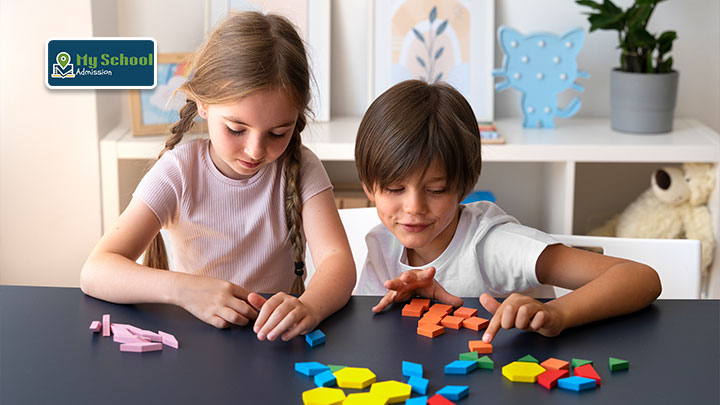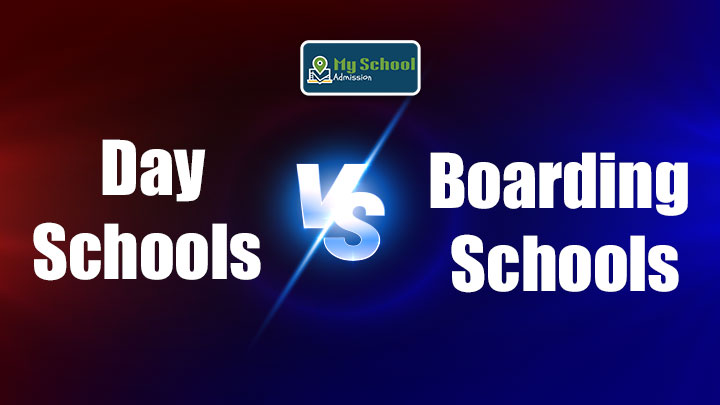In today’s world of technology, it has never been more important to get kids moving for their health and happiness. Physical activity is not just an outlet for kids to burn off energy, it is essential for their physical growth and development, brain and mood regulation. Schools can offer kids structured opportunities to be active in various ways. This blog will look at some of the most valuable physical activities for kids in schools, and the importance it plays in their development.
The Importance of Fun Physical Activities for Kids
Getting children involved in physical active play involves way more than just daily activity targets. When children have a great time, they are much more likely to continue doing it and invest in a lifestyle habit that promotes activity. Enjoyment is the key to building healthy habits that will last throughout their lifetime, well beyond school age; and when exercise feels more like play and less like work, children are naturally inclined towards it, therefore easier to do consistently in their lives.
Schools also have the opportunity to provide a variety of enjoyable physical activity experiences for students, using their facility and trained staff to access fun experiences for students. Fun experiences are purposely constructed to promote not just physical health, but also critical social skills, teamwork, and problem solving. Whether it’s a team sport, a high energy dance class, or an individual challenge, the fun element encourages students to want to participate and keep going, and makes physical education class a highlight of the school day as opposed to another subject in their schooling.
Benefits Beyond the Fun Physical Activities
The advantages of engaging children in fun exercise activities extend far and wide beyond the development of muscles and a healthy heart. The activities are great for character building, mental well-being, and even their academic performance.
- Better Cognitive Ability: When children exercise on a regular basis, it sends more blood into their brains, sharpening their concentration, memory, and ability to think. Active children tend to achieve better grades as a consequence.
- Better Mental Health: Exercise is like a natural energy boost. It may ease stress, anxiety, and even depression symptoms, promoting emotional equilibrium and strength.
- Improved Social Skills: Playing team sports and group games helps children learn valuable lessons about working as a team, communicating, leadership, and conflict resolution. They understand how to work towards a common goal.
- Boosted Self-Esteem: When children learn new skills, achieve personal goals, and make valuable contributions to their team, it provides a tremendous confidence and self-esteem boost.
- Discipline and Perseverance: Learning a sport or a new physical activity requires dedication and repetition. Children come to understand that hard work is essential as well as the virtue of persevering in the face of difficulty.
- Healthy Habits for Life: Encouraging fun, physical activities at an early age lays the foundation for an active lifetime and counteracts the couch-potato lifestyle so prevalent today.
School Sports Activities: A Cornerstone of Development
School sports events are usually the highlight of many children’s experience, offering a recreational avenue to participate in organized competition and hone skills in a team setting. From the excitement of football and basketball to the elegance of athletics and gymnastics, schools present opportunities for children to discover their sporting talents and test themselves. School sports are an important part of a well-rounded education, teaching lessons that go far beyond the academic arena.
Participating in school sports educates children on the value of rules, good sportsmanship, and respect towards opponents as well as officials. The camaraderie developed among teammates provides a feeling of belonging and solidarity, which is crucial for a child’s social development. Moreover, the work ethic required for training and practice instills a solid work ethic and sense of time management, as students learn to balance their academic responsibilities with their sport commitments.
Popular School Sports Activities and Their Unique Contributions
Schools provide a fantastic variety of sports, each playing a unique role in a child’s growth. Let’s take a look at some popular school sports and the specific benefits they offer:
Schools offer an excellent range of sports, each contributing uniquely to a child’s development. Here are some common school sports and the particular benefits they provide:
- Football (Soccer):
- Teamwork and Strategy: The game survives on collaboration, communication, and planning.
- Cardiovascular Health: It’s an excellent method to develop endurance and stamina.
- Agility and Coordination: Players execute running, dribbling, and performing rapid directional movements.
- Basketball:
- Hand-Eye Coordination: Skills necessary for successful dribbling and shooting.
- Quick Decision-Making: The game requires quick thinking.
- Team Play: There is success in passing, defense, and playing together on offense.
- Cricket:
- Patience and Concentration: Players need to maintain focus while batting, bowling, or fielding for long stretches.
- Strategic Thinking: Understanding the game and making tactical decisions is key.
- Hand-Eye Coordination: Crucial for both batting and catching.
- Swimming:
- Full-Body Workout: Works nearly all muscle groups, building strength and flexibility.
- Cardiovascular Fitness: Excellent for developing lung capacity and endurance.
- Life Skill: Not only a fundamental safety skill but also a means of relaxation and stress reduction.
- Athletics (Track & Field):
- Individual Discipline: Emphasizes personal best performances in running, jumping, and throwing.
- Goal Setting: Supports setting and achieving measurable goals.
- Versatility: Provides for diverse physical strengths and interests.
- Yoga and Martial Arts:
- Flexibility and Balance: Enhances body control and posture.
- Mental Focus and Discipline: Teaches self-control, concentration, and respect.
- Stress Reduction: Fosters mindfulness and emotional regulation
How Schools Encourage Kids to Get Active
Schools are a significant contributor to children getting active by integrating physical activity (PA) into everyday life, providing specialised facilities, and organising events relating to physical activity. Physical Education (PE) is at the centre of this, in which all students are provided with regular PE lessons where they are active. However, the contribution of schools to ongoing physical activity does not solely concern PE lessons, as schools provide clubs for after school sport activity, competition between school and sports days in the summer. Schools also contribute significantly to the presence of physical activity in the environment.
Many school’s settings, such as playgrounds, sporting fields, swimming pools and indoor courts may significantly affect the quantity of physical activity offered to children, as well as their quality. Having qualified sports coaches and PE teachers to inspire and motivate children to engage, with correct skill development and enthusiasm related to healthy lifestyles would also be important. Further, the involvement of parents (getting children active, and appreciating the importance of physical literacy) would also contribute positively; in children engaging.
- Dedicated PE Curriculum: Structured lessons that focus on essential movement skills, games, and sports.
- After-School Clubs: Providing specialized training in various sports and activities.
- Inter-School Competitions: Creating opportunities for competitive play and team representation.
- Annual Sports Days: Celebrating athleticism and participation for all age groups.
- Access to Facilities: Ensuring well-maintained sports fields, courts, and equipment.
- Qualified Coaches: Offering expert guidance to teach skills, tactics, and sportsmanship.
In summary, making physical activities a priority for kids in schools is vital for developing well-rounded individuals. The advantages go beyond just physical fitness, impacting cognitive growth, emotional health, and social skills. By embracing a diverse range of enjoyable physical activities and strong school sports programs, educational institutions can truly empower the next generation to lead healthier, happier, and more fulfilling lives.
Are you ready to discover a school that truly values holistic development?
When it comes to selecting the right educational environment for your child, it’s important to be aware of how vital physical education and strong sports programs are for children. You want a school that develops not only their brain, but also their body and emotional well-being.
Make My School Admission your one stop destination! We offer detailed profiles, real parent reviews, and expertise on the top schools in your area, and help you find schools that are known for physical education, sport programs and children’s health and well-being.
Check out My School Admission today to simplify your school search and ensure your child receives the well-rounded education that they truly deserve!



